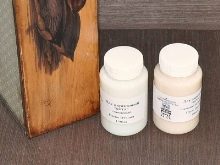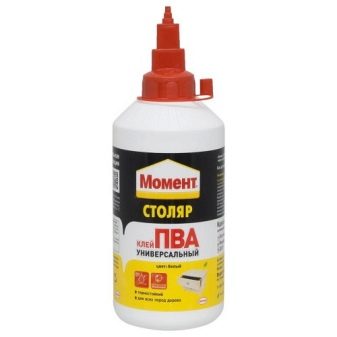Passion for creating beautiful items with your own hands has been very popular lately. Decoupage technique is one of the most interesting areas. An important element necessary to work in this technique is varnish. It is used not only for finishing products. The composition can be applied at other stages of work. About what varieties of decoupage varnishes exist, as well as about the nuances of their use, this article will tell.


Features
Varnish is a liquid substance that includes resins, oils, and sometimes alcohols. When applying it to any surface, a characteristic process occurs. The solution dries and a thin film appears on the product. The properties of this protective layer depend on the type of composition applied. It can be a glossy or matte layer. It can be absolutely transparent or have some kind of shade (usually yellow).
Some coatings protect materials from moisture and ultraviolet radiation.
In addition to protection, varnish can perform other functions. For example, the craquelure version is used to enhance the decorative properties of the product. Drying, it is beautifully cracked. This creates the effect of exquisite antiquity. Consider the possibilities of varnishes in more detail.



Functions
Lacquer coating performs immediately several functions.
- Alignment. Lacquer finish makes the work complete. It smooths the transitions between the elements, gives the shades the same degree of gloss or dullness. The composition is applied in several layers. Moreover, each time the coating is dried. The protruding parts are processed using sandpaper. The process continues until the material becomes perfectly smooth to the touch.So you can neutralize many shortcomings made by negligence or inexperience.
- Protection. Not only the appearance of the product, but also the possibility of its further use depends on the quality of the finishing treatment. Varnish protects the item from various external factors (humidity, dirt, sunlight, mechanical stress). This greatly increases the life of things.
- Fastening. If the craft involves the presence of many small decorative elements, a good solution would be to fix them with varnish at each stage of work. This will allow you to correct actions, simplify the ability to correct errors.
- Help in coloring. If you plan to stain the item after gluing some details, the work done should be varnished. If you make a mistake in a couple of strokes, they can be easily removed from a smooth surface.
- Gluing. Glue-varnish glues the decor to the workpiece, while varnishing the object.
- Create decorative effects. Patination, craquelure and some other original techniques involve the use of special varnishes.
- Strengthening the strength of the elements. Thin wipes may tear. To prevent such an annoying accident, they can be sprayed with a spray varnish.
- Enhanced grip. Sometimes materials are primed with such compounds. This allows for increased adhesion.
- An association. Certain types of varnishes can play the role of a solvent or, conversely, a bonding element. So there are interesting decorative compositions.



Kinds
Modern manufacturers offer different options for funds. They can be based on oil, water or alcohol. Each species has its own characteristics. Let's consider them in more detail.
Acrylic and Acrylic
These are the most popular options. They can perform almost all of these functions. The products are environmentally friendly, dry quickly. The thickened composition can be diluted with water without any problems. Tools are easily washed after work.
The only drawback is the need for a certain level of humidity for operation. Only an indicator of at least 50% will ensure flawless crystallization.

Polyurethane
Odorless water-based products are preferred for most jobs. The coating is quite durable, wear-resistant. But if the item is planned to be used in a humid room (bath, sauna), for reasons of practicality, oil varieties are used. It is worth noting that the composition “grasps” for several days. Therefore, items treated with such varnish should be dried for 2-3 days before starting operation.

Alkyd
These are alkyd resins. The yacht variety usually has an amber hue. Parquet version is transparent. Both subspecies provide a fairly dense film, resistant to moisture and mechanical stress. Naturally, the coating dries for a long time (up to several days). Trying to speed up the process with a hairdryer is undesirable - spots or cracks may appear.
Special solvents are used to clean instruments. A good solution is to purchase disposable, inexpensive brushes. You can also buy a product in the form of a spray. It is worth considering that some alkyd options have a pungent odor, so you should take care of a protective mask.

Decorative
Such compositions are designed to create original effects. These are bituminous, facet, velor and others. Usually they do not have good protective properties, but the result of their use is impressive. However, some special varnishes can be replaced with improvised means.
For example, to make an effective “cracking” of an item, it is not necessary to purchase craquelure varnish. For this, ordinary PVA glue is suitable.


Nitrolac
Such compositions dry out very quickly. They perfectly protect surfaces, but they should be covered strictly with a mask and gloves. A sharp unpleasant smell is not the only minus of these funds. Their pairs are harmful to human health. Therefore, it is necessary to ensure good ventilation of the room, and it is better to abandon their use if possible, replacing them with safer options.

Zapon
This is a special heat resistant option. It is ideal for products such as hot coasters. At the same time, this variety can be used as a regular top coat. It is inexpensive, diluted with acetone. Working with it requires a mask and airing due to the strong smell. Tools are cleaned with a solvent.

Glassy
This type forms a wear-resistant film with high elasticity. Products are glossy, perfectly smooth. Such tools are often used to decorate leather goods (wallets, business card holders, etc.). The varnish can be diluted with water. Brushes are easily washed after work. The disadvantages include high cost and exactingness to storage conditions.
At low temperatures, the composition changes its quality.

Shellac
This type refers to the decorative, however, stands out among others. With its help, patination is possible, enhancing the expressiveness of colors. It is used for woodwork. As a result, the material acquires a soft shine without the effect of a film. With the help of shellac they also fix the potal. The coating dries quickly, almost odorless. Tools after it are cleaned with alcohol solutions.

How to choose?
To understand which varnish is best suited in your case, it is worth considering several points. The choice should be made in accordance with the design of the craft, the material and the conditions for the future use of the product.
- Think glossy or matte finish should be in accordance with your idea. The first option will be brighter, but it will shimmer in the rays of light. The second can slightly muffle shades, but will not glare. You can choose the semi-matt option (middle ground).
- Keep in mind that Decorative varnishes only decorate the item. To protect against external influences, use construction compounds.
- Know that products that dry for a long time are not suitable for tissue technology. This is because the work involves the application of several layers.
- To decorate items that often come in contact with a person (such as kitchen utensils), safe formulations should be selected.
- If the product is exposed to water, the use of waterproof agents is necessary.


Usage Tips
In conclusion, it is worth considering the nuances of the correct use of varnishes for decoupage, and also reveal some secrets of professionals.
- The varnish should be applied in several thin layers. All layers, except the last, are lightly ground.
- Better to use a flat synthetic brush. Soft pile is preferred. Of course, the tool should be clean.
- The tool is dipped in varnish for 0.5 lengths of hair. The product is applied with quick movements. You should not repeatedly apply the composition to the same area, otherwise it will not work to avoid bumps.
- To prevent the coating from slipping better not mixmade on different bases.
- The glossy acrylic coating is slightly sticky. Therefore, it is worth completing the work by applying a topcoat over it.
- A large number of layers of matte varnish will make the image more dull. Therefore, it is worthwhile to make the first few layers glossy, and apply a matte product only at the end (in 2-3 layers).
- If you mix a glossy finish with a matte finish, You can get a very expressive "satin" effect.



For how to apply acrylic varnish without stripes and smudges, see the next video.










